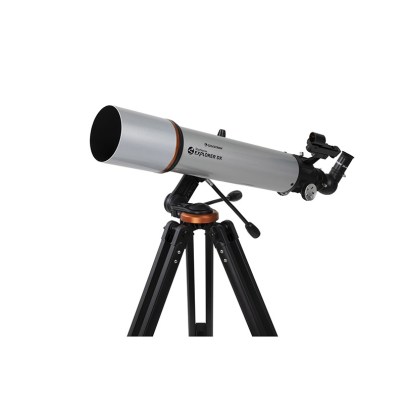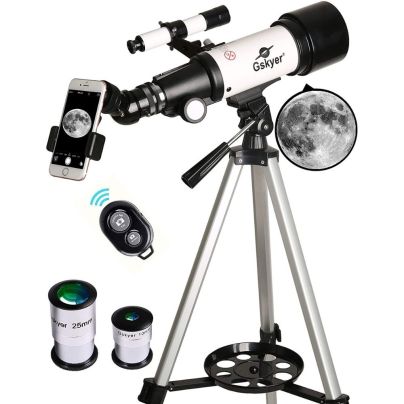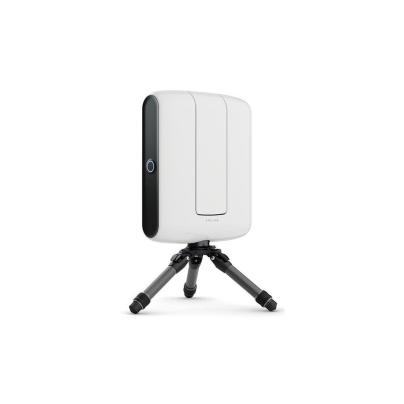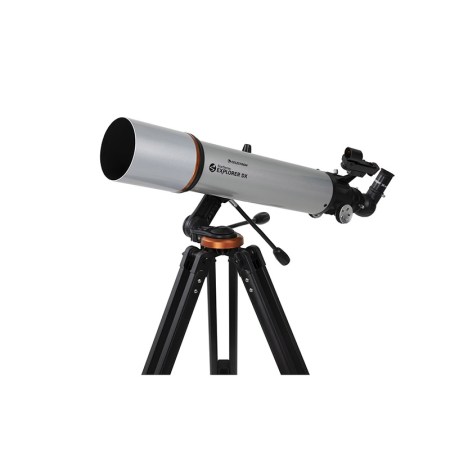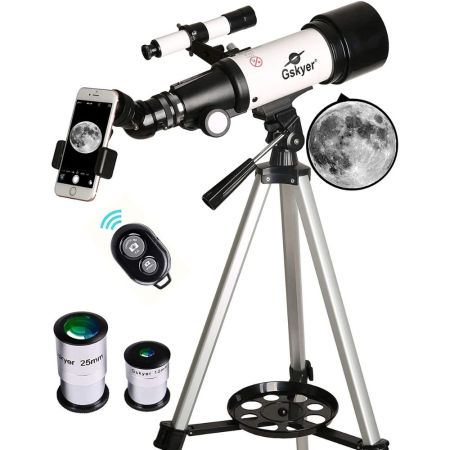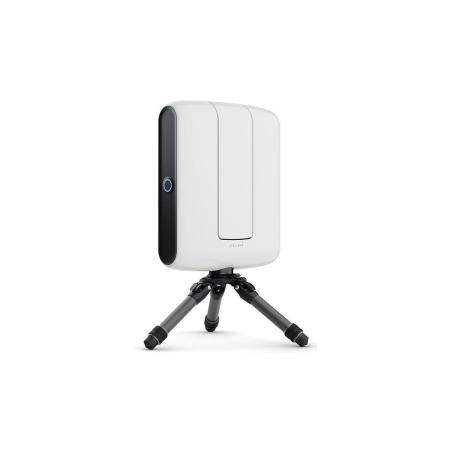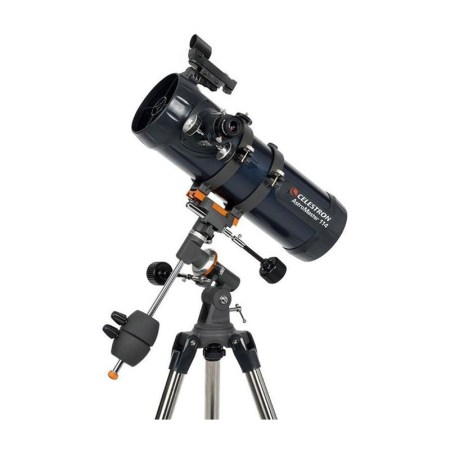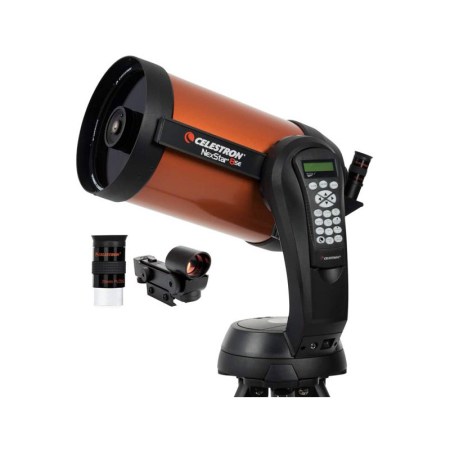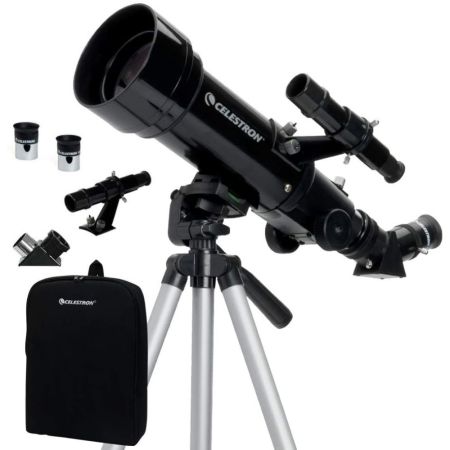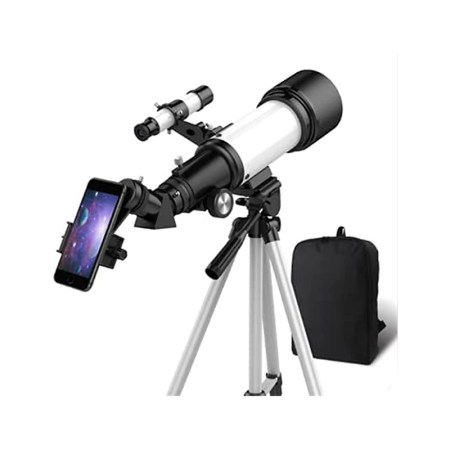We may earn revenue from the products available on this page and participate in affiliate programs. Learn More ›
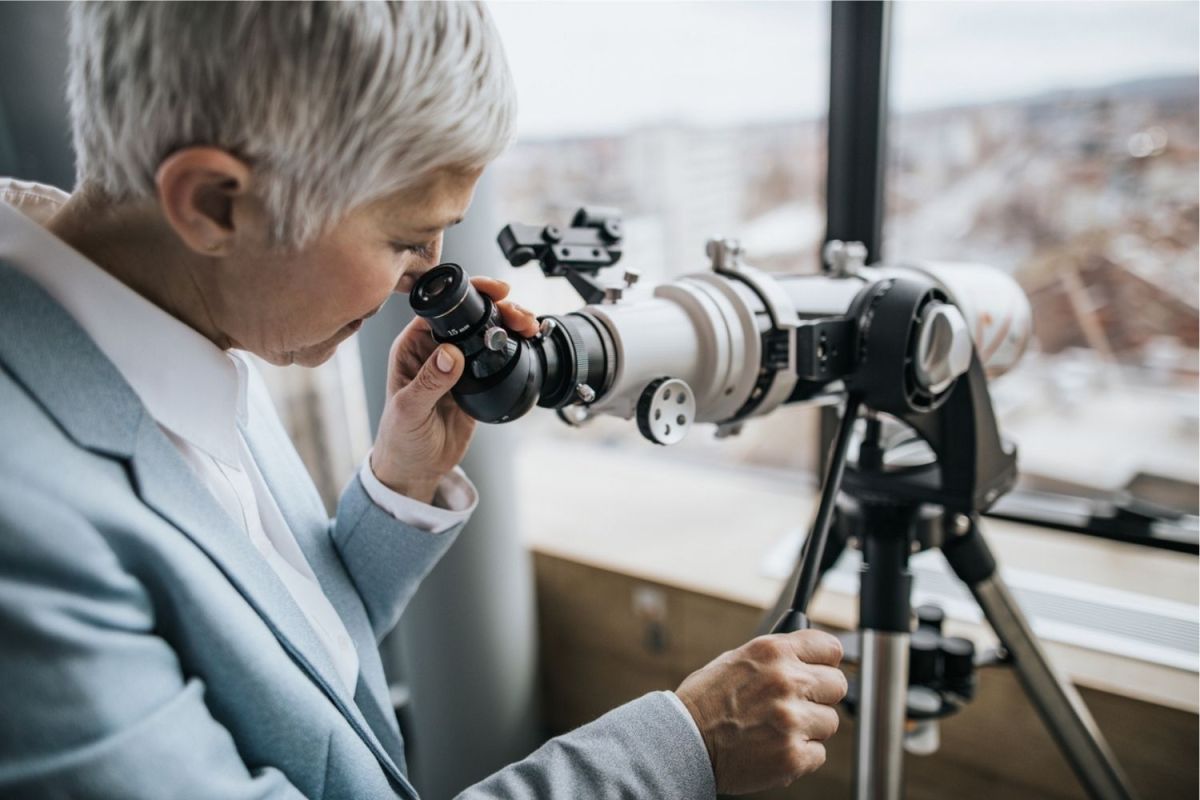
Since the early 17th century, telescopes have been used to observe stars, planets, and celestial bodies light-years from Earth. A telescope uses a magnifying lens or curved mirror to gather and focus the light from the nighttime sky to enable the naked eye to see distant stars and planets through the eyepiece.
The best telescope for home use depends on your plans for the telescope, where you plan to use it, and your level of experience, ranging from beginner to amateur to semi-professional astronomer. We’ve compiled a list of the best telescopes available in their respective categories based on product efficacy and overall value. We researched top-rated options and consulted customer reviews to create this list of favorites.
- BEST OVERALL: Celestron – StarSense Explorer DX 102AZ Telescope
- BEST BUDGET: Gskyer Telescope Astronomical Refracting Telescope
- UPGRADE PICK: Vaonis STELLINA Observation Station Hybrid Telescope
- BEST FOR BEGINNERS: Celestron AstroMaster 114 EQ Newtonian Telescope
- BEST FOR ASTROPHOTOGRAPHY: Celestron NexStar 8SE Computerized Telescope
- BEST FOR TRAVEL: Celestron Travel Scope 70mm Refractor Telescope
- BEST FOR KIDS: OYS Telescope, 70mm Aperture 400mm AZ Mount

Types of Telescopes
The three main types of telescopes are refractor, reflector, and compound. The telescope that’s best for you depends on how you plan to use it.
Refractor
One of the most common types of telescopes—refractor telescopes—are the versions typically featured in popular media. At the front of the telescope, a lens known as an “aperture” directs light through the finder scope to a mirror and into the eyepiece.
Because this style of telescope doesn’t invert the image before it reaches the eye, users can view objects both in the sky and on Earth. However, to view very faint objects in the sky, a reflector or compound telescope typically works better than this type of telescope.
Reflector
Reflector telescopes don’t use a lens; instead, their two mirrors gather and direct the light from the night sky. This process inverts the image, which makes viewing objects on Earth difficult. However, this method helps focus and provides additional clarity to objects that would appear faint in a refractor telescope.
No lens means that dust and dirt may get into the internal components of a reflector telescope. Users should plan to clean the telescope regularly and store it in an appropriate location.
Compound
Compound, or catadioptric, telescopes combine refractor and reflector telescopes into one highly accurate product. Instead of two mirrors or a mirror and a lens, the compound telescope contains two mirrors and one lens.
The path that the light travels through the telescope tube is inverted, but it then reverts to an upright orientation before passing through the eyepiece, which means users can view objects in the sky and on Earth. The increased magnification along the tube helps improve the telescope’s strength and clarity. However, compound telescopes typically cost more than refractor or reflector telescopes.
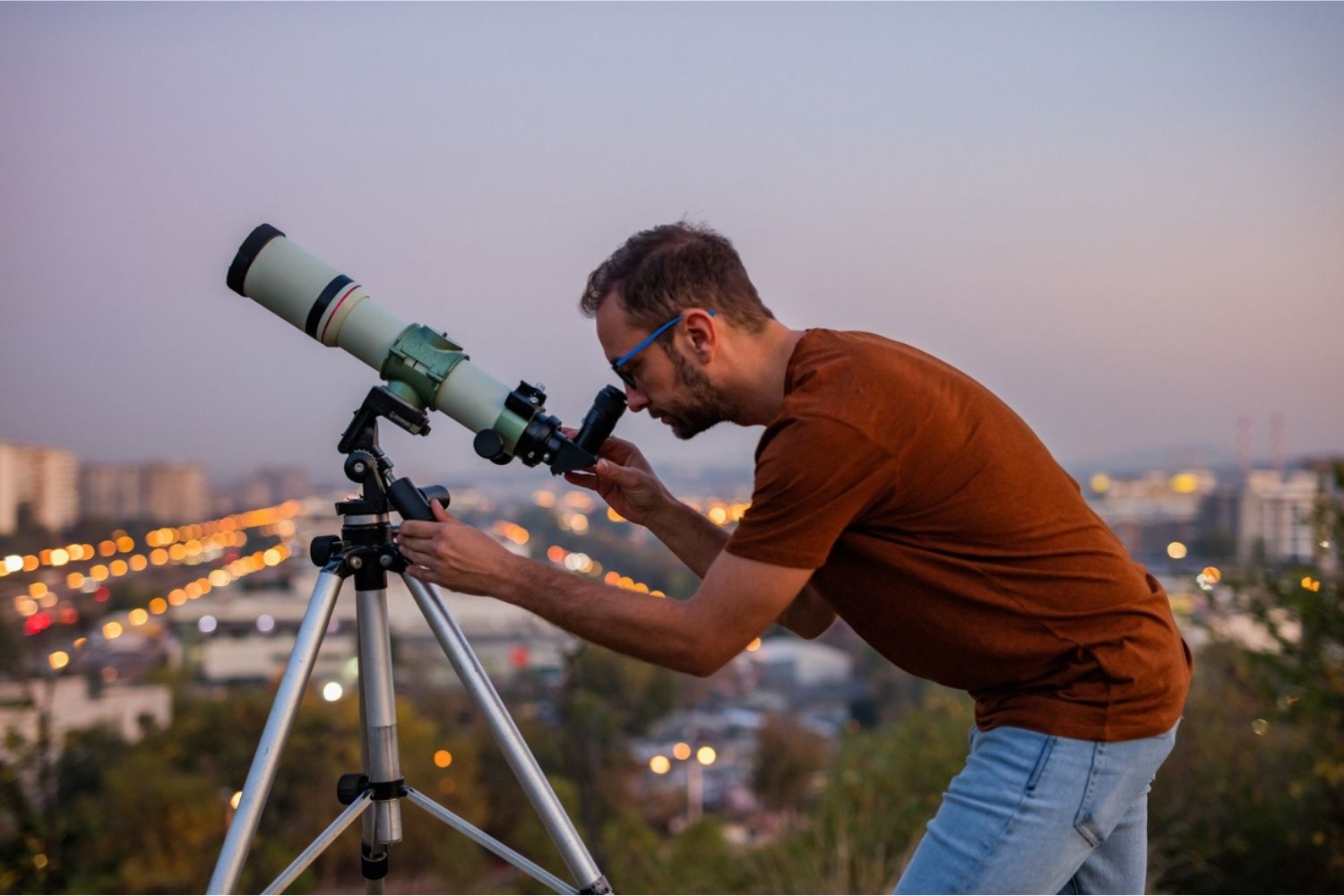
What to Consider When Choosing the Best Telescope
Before buying a telescope for stargazing, keep in mind these important shopping considerations to help narrow your choice.
Purpose
How you plan to use your new telescope is an important factor to consider. Whether you plan to view live, view live and record, or practice astrophotography, consider the different strengths of the various telescopes and mounts.
- Live viewing is simply looking through the telescope without worrying about videos or photography; almost any telescope works for this purpose. However, for strengths beyond that of the human eye, adequate magnification requires a minimum 70-millimeter (mm) aperture size. If you plan to move your telescope to multiple locations during your stargazing expeditions, you probably should consider its portability as well.
- Live viewing and recording is when you look through a telescope and use your phone (or another device) to record your session. This isn’t a new practice, but it’s much more popular now since almost everyone has a smartphone. To record, look for a telescope with a smartphone mount, which allows you to mount the phone to the telescope so the video and image aren’t distorted by movement.
- Astrophotography, essentially the photography of astronomical objects, began almost 200 years ago in 1840, when the first photograph of an astronomical object was taken. For astrophotography, the ideal telescope includes an equatorial mount with slow motion or motorized controls to track specific celestial bodies as they move across the nighttime sky. Telescopes with electronically programmable “GoTo” features are available, but they cost more.
Experience Level
While experience level shouldn’t be a factor that prevents anyone from jumping into astronomy, keep it in mind as you choose a telescope. The best telescope isn’t the most powerful; instead, it’s the one that you will use the most.
- Beginners (and most children) are often attracted to telescopes that are far too complex—and expensive—for their skill level. Beginners will typically benefit from a smaller, more affordable telescope with an aperture no smaller than 70 millimeters. These units usually have a straightforward model with an easily adjustable mount.
- Amateur astronomers may have a few years of experience in observing the stars and planets, but they may not be ready to dive into more advanced telescopes. At this level of experience, amateurs may want to begin exploring astrophotography or at least invest in an equatorial mount or a GoTo mount for their telescope, which allows users to move quickly between objects in the sky.
- Experienced astronomers, having observed the night sky for years, will likely invest in a powerful telescope with complex features, such as an electronic touch pad to program coordinates into the telescope and mount. However, experienced astronomers and astronomy hobbyists alike may have one or more telescopes with varying strengths and weaknesses.
Aperture Size
When selecting a new telescope, one of the most important features is the size of the aperture. The aperture—the diameter of the telescope’s lens or mirror—is also known as the “objective.” The larger the size of the aperture, the clearer that faint objects will appear through the telescope.
The aperture size usually appears near the focuser at the front of the optical tube assembly or on the product description or manufacturer’s website. The size of the aperture is measured in millimeters, but it may sometimes be displayed in inches, with 1 inch equaling 25.4 millimeters. To ensure a view of the sky that’s an adequate improvement over the naked eye, select a telescope with at least a 70-mm (2.8-inch) aperture.
Magnification
Because the magnification of a telescope increases with a change of its eyepiece, its specific magnification capability isn’t as important as most people think. However, even with very high magnification, objects will remain dim and blurry. To solve this issue, magnification needs to increase along with the size of the aperture.
As the size of the telescope aperture gets bigger, the amount of light that can be collected and clearly viewed also increases, so dim and blurry objects become clear. Most users find a useful magnification is about 20x to 50x per inch of aperture.
In ideal viewing conditions, this means that a 4-inch or 101.6-mm scope only gets about 200x useful magnification. A 6-inch or 152.4-mm scope could reach up to 300x. Keep in mind that light pollution, smog pollution, cloud coverage, humidity, and many other factors affect viewing conditions.
Avoid telescopes that boast extremely high magnification levels, such as 600x. They may magnify the light in the sky by 600x, but the resulting image in the eyepiece is indecipherable, because the light fails to focus without an appropriate aperture. For a true 600x magnification, telescopes need at least a 12-inch or 304.8-mm aperture.
Eyepieces
The eyepiece, an integral part of the optical system of a telescope, can completely change the view of the sky. Eyepiece measurements, which normally appear in millimeters or inches, range greatly in size. To ensure the eyepiece has an appropriate magnification for the telescope, compare the size of the eyepiece to the focal length of the telescope.
Focal length divided by eyepiece size results in total magnification. For example, a telescope with a 500-mm focal length and a 25-mm eyepiece provides a magnification of 20x.
Those who must wear their glasses while viewing through a telescope should look for an eyepiece with a significant distance between the eye and the eyepiece lens, which is known as “eye relief.” The extra length improves comfort and ease of use while wearing corrective lenses.
Telescope Mount
Telescope mounts come in three main types: altazimuth, equatorial, and motorized.
- Altazimuth mounts are simple systems that move vertically in an up-and-down motion or horizontally in a side-to-side movement. Use these mounts with a standing tripod or as a tabletop telescope.
- Equatorial mounts, a more complicated style of telescope mount, must be aligned with the Earth’s axis. Once the mount is aligned, the scope follows objects in the sky as they move, which makes equatorial mounts especially useful for astrophotography because the object remains centered as it moves.
- Motorized mounts operate automatically when the user selects an astronomical object or the coordinates of the object. Coordinates for astronomical objects are based on ascension and declination. These mounts cost more, but they can save the time that otherwise would be spent manually moving and setting the telescope.
Size and Portability
Before you buy a new telescope, consider where you want to use it and how you plan to transport it. Having a telescope that’s too small to properly see anything probably is a waste of money, but a telescope that’s too big to move easily is even more wasteful unless you can leave it up permanently. Many people find they set up a bulky telescope only once or twice, then leave it to gather dust because it’s too much effort to set up and haul around.
Instead, select a telescope with at least a 70-mm aperture to ensure a clear view of astronomical objects through the eyepiece. Once you find an acceptable aperture, increase the size to your desired level, keeping in mind that you must move it and store it. Moreover, you want to consider whether it will fit in your car. For a clear view, users sometimes transport their telescope far from the light pollution caused by city lights.
Additional Features
Some additional features may come with the telescope or telescope mount, including a carrying case, smartphone mount, or a GoTo feature.
- Carrying cases keep a telescope safe during storage or transport to a new viewing site and back home again. Cases are constructed with a range of materials, from simple padded nylon to hard plastic shells with durable interior padding.
- Smartphone mounts, small accessories that can be added to a telescope, take pictures or record videos of the stars, planets, and other astronomical bodies.
- A GoTo is a compact onboard computer that attaches to a motorized mount. The computer usually comes preloaded with information about the night sky and the celestial bodies. Selecting a star, planet, galaxy, or another astronomical object directs the motorized mount to automatically locate the chosen object.
Our Top Picks
With a nod toward quality, features, and price, the list that follows should help you find the best telescope for your needs.
Best Overall
Celestron – StarSense Explorer DX 102AZ Telescope
See ItInstead of trying to find out where to look on the phone, then attempting to adjust the telescope to a matching position, users can integrate the two with this smartphone app-enabled telescope. Just select a planet, star, galaxy, or nebula from the StarSense app and follow the arrows on the smartphone to locate the desired celestial object.
It should be noted, though, that this is not an automatic process. The user needs to follow the directions on the app by manually adjusting the altazimuth mount.
The telescope weighs just 14.2 pounds and it’s relatively easy to disassemble for transportation. Beyond the unique smartphone-compatible design, this telescope has fairly standard features, including a 102-mm aperture and a focal length of 660 mm. When used with the 10-mm eyepiece, it has a magnification of 66x, while the 25-mm eyepiece only increases the magnification by 26x.
Product Specs
- Aperture: 102 mm
- Focal length: 660 mm
- Eyepiece: 10 mm and 25 mm
Pros
- Lightweight, travel-ready design
- Multiple eyepieces
- Analyzes star patterns to guide users to target objects
- List of celestial bodies visible from viewing location
Cons
- Manual altazimuth mount not suitable for astrophotography
Get the Celestron StarSense Explorer telescope at Walmart and Best Buy.
Best Budget
Gskyer Telescope Astronomical Refracting Telescope
See ItWhen purchasing a beginner or child’s starter telescope, many consumers don’t want to spend a lot. The Gskyer Telescope is an affordable option, but it features a 70-mm aperture, 400-mm focal length, 40x maximum magnification, and two eyepieces: 10 mm and 25 mm. The 25-mm eyepiece provides a lower 16x magnification.
The refracting telescope, which sits in an altazimuth tripod, also comes with a 3x Barlow lens that extends the focal length of the telescope to increase its magnification ability. When the Barlow lens is installed, the focal length increases to 476 mm, giving the telescope a maximum magnification of 48x (10 mm) or 19x (25 mm).
The telescope also has a smartphone adapter with a wireless camera remote, so you don’t have to be near your phone or the telescope to capture images.
Product Specs
- Aperture: 70 mm
- Focal length: 400 mm
- Eyepiece: 10 mm and 25 mm
Pros
- Simple to use altazimuth tripod
- Wireless camera remote
- Multiple eyepieces
- Extended focal length with the Barlow lens
Cons
- Low maximum magnification
Get the Gskyer telescope on Amazon and at Walmart.
Upgrade Pick
Vaonis STELLINA Observation Station Hybrid Telescope
See ItSpend more time looking up at the stars and less time trying to figure out where the stars actually are with this digital observation station and telescope hybrid. It is designed with an auto-focusing system as well as an automatic pointing and tracking system. This makes it easy for users to find the desired star, planet, or celestial object. Simply set the celestial object, and the telescope will automatically adjust the direction to the correct location before adjusting the focus for optimal viewing.
The telescope has a 5-hour battery, and it’s controlled by a smartphone or tablet so users can capture brilliant images of the night sky. It has a modest 80-mm aperture and standard 400-mm focal length with a digital lens in place of an eyepiece that displays the equivalent of 50x to 100x magnification. All of these features, however, come at a very high price.
Product Specs
- Aperture: 80 mm
- Focal length: 400 mm
- Eyepiece: Digital lens
Pros
- Autofocus feature
- Built-in dew heater improves lens observation condition
- Automatic pointing and tracking system
- 5-hour battery life
Cons
- High price
- Middling clarity
Get the Vaonis STELLINA observation station at Vaonis.
Best for Beginners
Celestron AstroMaster 114 EQ Newtonian Telescope
See ItWhen getting started with astronomy, users may want a telescope with impressive aperture size, magnification, and an equatorial mount that lets them track the natural movement of the celestial bodies. The Celestron AstroMaster 114 EQ is an excellent option that comes with several premium features, including a wide 114-mm aperture and 1,000-mm focal length.
This reflector telescope comes with two eyepieces to provide 50x magnification with the 20-mm eyepiece or 100x with the 10-mm eyepiece. The telescope sits on an equatorial mount that has two slow-motion control knobs to manually track astronomical objects across the sky. However, keep in mind that equatorial mounts are more difficult to set up than altazimuth mounts, and they must be aligned with the Earth’s axis.
Product Specs
- Aperture: 114 mm
- Focal length: 1,000 mm
- Eyepiece: 10 mm and 20 mm
Pros
- Multiple eyepieces included
- Durable, stainless steel tripod
- Includes planetarium software
- Broad aperture and long focal length
Cons
- Equatorial mount is difficult to set up
Get the Celestron AstroMaster telescope at High Point Scientific.
Best for Astrophotography
Celestron NexStar 8SE Computerized Telescope
See ItThis compound telescope has a wide 203-mm aperture and a long 2,032-mm focal length that allows viewers to see the night sky with crystal clarity at 81x magnification through its included 25-mm eyepiece. The telescope mount is fully automated, allowing users to keep their focus on the sky, not on manually maneuvering the telescope into the perfect position.
The computerized mount is preloaded with information to allow viewers to browse and select from more than 40,000 celestial objects. Once an observer selects an object, the mount automatically adjusts its position to locate the celestial object in seconds. Both the tripod and telescope come apart easily to allow easy packing and transportation.
Product Specs
- Aperture: 203 mm
- Focal length: 2,032 mm
- Eyepiece: 25 mm
Pros
- Autofocus feature
- Ideal for astrophotography
- Automatic pointing and tracking system
- Impressive clarity due to the 203-mm aperture
Cons
- Not highly portable
- High price
Get the Celestron NexStar telescope at Walmart.
Best for Travel
Celestron Travel Scope 70mm Refractor Telescope
See ItThose who take their telescope wherever they go or who regularly set up observation sites at several different locations need a lightweight, portable product like the Celestron 70mm Travel Scope. The refractor telescope lets viewers look at the sky or toward ground objects. It comes with a tripod, two eyepieces, and a travel backpack to safely store and carry the telescope and all its parts.
This telescope has a 70-mm aperture, 400-mm focal length, and with the included 10-mm eyepiece, 40x-maximum magnification capability. Use the 20-mm eyepiece to lower the magnification level to 20x. The lightweight tripod contains a basic, manual altazimuth system for directing the view of the telescope, making it quick and easy to set up.
Product Specs
- Aperture: 70 mm
- Focal length: 400 mm
- Eyepiece: 10 mm and 20 mm
Pros
- Lightweight at just 4.2 pounds
- Multiple eyepieces
- Comes with a carrying case
- Includes Starry Night education software
Cons
- Manual altazimuth system isn’t appropriate for astrophotography
- Lightweight design is vulnerable to damage
Get the Celestron Travel Scope telescope at Walmart and Best Buy.
Best for Kids
OYS Telescope, 70mm Aperture 400mm AZ Mount
See ItWhen encouraging your child’s new passion, the OYS refractor telescope with its 70-mm aperture and 400-mm focal length, combined with an included 20 mm eyepiece, provides a clear view. In addition, it offers either 20x or 44x magnification and includes a 9-mm eyepiece as well.
The telescope can be used for viewing celestial bodies or objects on Earth, and it comes with a phone adapter that connects to a smartphone to capture images of the night sky. This telescope with a simple setup sits on an easily adjustable altazimuth manual tripod. Once the viewing session is finished, pack everything away in the included backpack for easy transportation and storage.
Product Specs
- Aperture: 70 mm
- Focal length: 400 mm
- Eyepiece: 9 mm and 20 mm
Pros
- Smartphone compatible
- Affordable, lightweight design
- Comes with a travel bag
- Great for kids and beginners
Cons
- Not as clear for viewing planets and detail
Get the OYS telescope on Amazon and at Walmart.
Our Verdict
If you have your eye on the planets and simply want to observe, the Celestron – StarSense Explorer is our top choice. On the other hand, budget-conscious shoppers or those new to astronomy may want to start with the affordable Gskyer Telescope before exploring more advanced models.
How We Chose the Best Telescopes
Before we considered any products for selection, we researched each option extensively to determine if a product had any significant highlights or shortcomings that could influence the overall quality of the telescope. Key factors in this selection process included the aperture, focal length, eyepieces, and the type of included telescope mount (if any), as well as the size, portability, and any extra features.
Most telescopes have a basic aperture range from 70 millimeters to 120 millimeters, while the average focal length stretches from 400 millimeters to 660 millimeters. Any products with an aperture or focal length that exceeded these standards tended to stand out from the more common options.
Products with more than one eyepiece or any extra features that helped to improve the user experience were considered more favorably than similar products that lacked these essential inclusions. The size, portability, and telescope mount helped to determine the exact purpose of each telescope, with small, lightweight options considered ideal for travel and telescopes with equatorial mounts better for astrophotography.
FAQs
Before investing in a new telescope, take a look at these frequently asked questions and answers.
Q: What type of telescope should I buy?
Base your decision on your skills, experience, and plans for the telescope. If you need a telescope for astrophotography, you may want a computerized telescope with an equatorial mount, so you can track the movement of the celestial bodies in the night sky.
If it’s for live viewing deep-sky objects, you probably want to start with a simple telescope before moving on to a more complex model. Experienced hobby astronomers likely already have specific characteristics in mind when they’re looking to upgrade or replace their current telescope.
Q: What size telescope do I need?
While you can choose a telescope of almost any size, consider not only your plans for the telescope but also how much it weighs. Portable telescopes can be transported to optimal viewing locations. You also can find smaller tabletop telescopes to position in your backyard for stationary observation of some celestial objects.
The choice is yours, but don’t purchase a telescope that you can’t move easily unless you have a permanent location available to set it up, so it won’t be exposed to the elements.
Q: How far can a telescope “see”?
Your telescope’s range depends on the model you choose, your geographic location, and the clarity of the sky. For instance, the Hubble telescope has recorded images more than 10 billion light-years away. The average telescope provides a view of celestial bodies 1 million light-years away, which is more than enough to get a great glimpse of the solar system.
